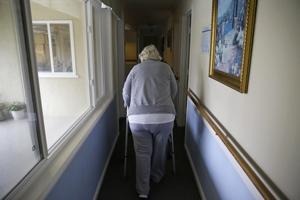One in four older adults in the U.S. will fall each year, putting them at risk of injury, broken bones and even death.
Falls are a growing public health concern as the country’s population sees record numbers of people turn But common as falls may be, they are not inevitable. “The more work we do, the more we realize that that healthy aging doesn’t have to include falling,” said Cara McDermott, who researches falls at Duke University School of Medicine. Here are some recommendations on how to reduce your risk of falling.

Fall-proof your home Start with how your house is set up: Consider removing small area rugs, change out dim lighting and don’t put pots and pans in hard-to-reach places. Then, aim for providing extra stability in places where its easier to lose your balance. Install railings on both sides of the stairs, a grab bar in a bathroom and no-slip strips on wood or tile floors.
It’s also important to keep your home clean: Don’t leave items on the floor, and clean up spills before they dry up and become harder to deal with. Consider using a walker or cane to keep you stable, but make sure it’s right for your height and that you know how to use it properly. The National Institute on Aging has a with tips on how to fall-proof your home, room by room.
Exercise to build strength and balance Go back to the basics with Newton’s first law: A body in motion stays in motion. That is, staying active can help prevent future issues — even if you’ve fallen be.























